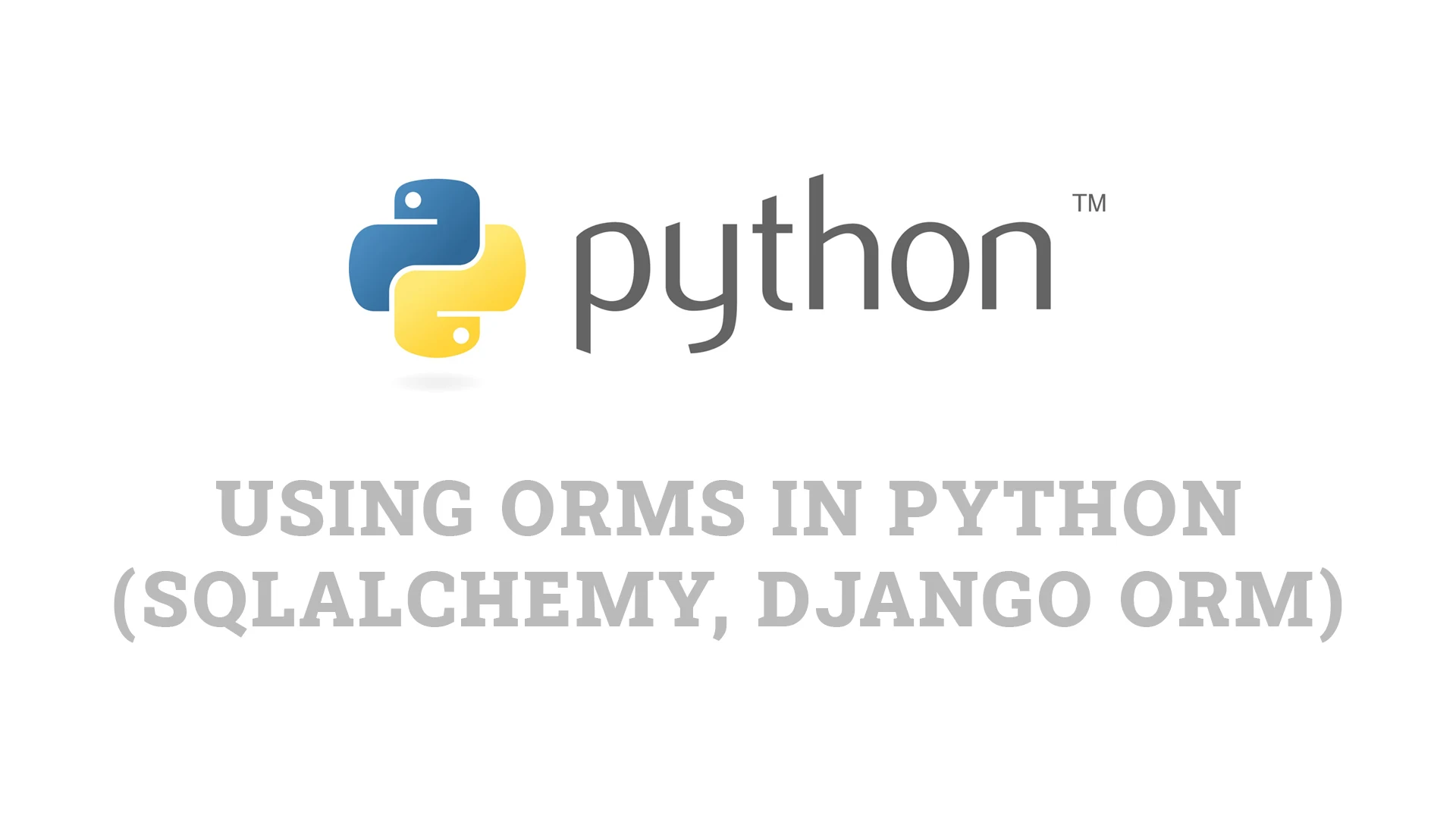Overview
Object-Relational Mapping (ORM) is a technique that enables developers to interact with databases using object-oriented programming principles instead of writing raw SQL queries. ORMs like SQLAlchemy and Django ORM simplify database management, improve code readability, and enhance security by mitigating SQL injection vulnerabilities.
This article provides a comprehensive guide to using SQLAlchemy and Django ORM to manage database operations efficiently in Python.
What is an ORM?
An ORM maps database tables to Python classes and rows to objects. This abstraction allows developers to work with databases using familiar Python syntax instead of complex SQL queries.
Key Features of ORMs:
- Data Modeling: Define database schemas using Python classes.
- CRUD Operations: Perform Create, Read, Update, and Delete operations with minimal code.
- Relationships: Easily model one-to-one, one-to-many, and many-to-many relationships.
- Database Independence: Write code once and support multiple database backends.
SQLAlchemy: The Python SQL Toolkit
SQLAlchemy is a powerful and flexible ORM library that allows developers to have fine-grained control over database interactions.
1. Installing SQLAlchemy
# Install SQLAlchemy
pip install sqlalchemy
2. Setting Up a Database Connection
from sqlalchemy import create_engine
# Create an SQLite database engine
engine = create_engine('sqlite:///example.db', echo=True)
3. Defining a Model
from sqlalchemy.ext.declarative import declarative_base
from sqlalchemy import Column, Integer, String
# Create a declarative base
Base = declarative_base()
# Define a User model
class User(Base):
__tablename__ = 'users'
id = Column(Integer, primary_key=True)
name = Column(String, nullable=False)
email = Column(String, unique=True, nullable=False)
4. Creating the Database Schema
# Create all tables
Base.metadata.create_all(engine)
print("Database schema created!")
5. Performing CRUD Operations
from sqlalchemy.orm import sessionmaker
# Create a session
Session = sessionmaker(bind=engine)
session = Session()
# Add a new user
new_user = User(name='Alice', email='alice@example.com')
session.add(new_user)
session.commit()
# Query users
users = session.query(User).all()
for user in users:
print(user.name)
# Close the session
session.close()
Django ORM: Built-In ORM for Django Framework
Django ORM is an easy-to-use, built-in ORM within the Django web framework. It provides seamless integration with Django applications.
1. Setting Up Django
# Install Django
pip install django
# Create a new Django project
django-admin startproject myproject
2. Defining Models
# File: myapp/models.py
from django.db import models
class User(models.Model):
name = models.CharField(max_length=255)
email = models.EmailField(unique=True)
3. Migrating the Database
# Generate migration files
python manage.py makemigrations
# Apply migrations to the database
python manage.py migrate
4. Performing CRUD Operations
from myapp.models import User
# Create a user
user = User.objects.create(name='Bob', email='bob@example.com')
# Query users
users = User.objects.all()
for user in users:
print(user.name)
# Update a user
user.name = 'Robert'
user.save()
# Delete a user
user.delete()
Key Differences Between SQLAlchemy and Django ORM
- Flexibility: SQLAlchemy provides more control over complex queries, while Django ORM is easier for beginners.
- Framework Dependency: Django ORM is tied to the Django framework, whereas SQLAlchemy is framework-agnostic.
- Performance: SQLAlchemy is more efficient for large-scale applications with complex query optimization needs.
Best Practices for Using ORMs
- Use Transactions: Wrap multiple operations in transactions to ensure data consistency.
- Optimize Queries: Use lazy loading and batch queries to reduce database load.
- Validate Data: Ensure data integrity by performing validation at both the application and database levels.
- Monitor Performance: Use query profiling tools to detect bottlenecks.
- Use Indexes: Define indexes on frequently queried columns for faster lookups.
Conclusion
ORMs like SQLAlchemy and Django ORM simplify database operations, making Python an excellent choice for data-driven applications. SQLAlchemy provides unmatched flexibility for advanced use cases, while Django ORM offers a straightforward approach with built-in integration for Django projects.
By mastering these ORMs and following best practices, developers can build efficient, scalable, and secure database-backed applications.
%20.jpg) Reviewed by Curious Explorer
on
Monday, January 13, 2025
Rating:
Reviewed by Curious Explorer
on
Monday, January 13, 2025
Rating:
%20.jpg)



No comments: